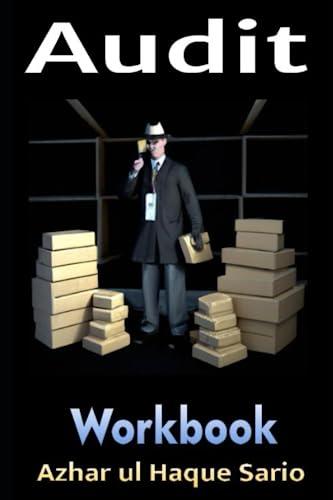





12 Liabilities 13 Current liabilities 16 14 Long-term liabilities 15 Total liabilities Stockholders' Equity 17 Preferred stock, $10 par 18 Common stock, $5 par 19 Retained earnings 20 Total stockholders' equity 21 Total liabilities and stockholders' equity Use the following balance sheet form to enter amounts you identify from the computations on the Liquidity and Solvency Measures panel. You will identify other amounts for the balance sheet on the Profitability Measures panel. If you have a choice of two amounts, assume the first amount in the ratio is for the end of the year. Compute any missing amounts. Balance Sheet December 31, 20Y6 1 Assets 2 Current assets: 3 Cash $823,000.00 4 Marketable securities 5 Accounts receivable (net) 6 Inventory 7 Prepaid expenses 8 Total current assets 9 Long-term investments 10 Property, plant, and equipment (net) 11 Total assets Your friend, another accountant, has bet you that with your knowledge of accounting and just the computations for common analytical measures, you can figure out many aspects of a company's financial statements. You take the bet! Match each computation to one of the liquidity and solvency measures in the table. (Hint: Begin by looking for simple computations and identifying the amounts in those computations. Look for other measures that use those amounts.) Liquidity and Solvency Measures Computations Accounts receivable turnover $4,100,000 + [($1,072,000+ $1,100,000) + 2] Ratio of liabilities to stockholders' equity $2,530,000+ $4,077,000 Number of days' sales in inventory Quick ratio Working capital Inventory turnover Times interest earned Number of days' sales in receivables Ratio of fixed assets to long-term liabilities Current ratio Match each computation to one of the profitability measures in the table. Profitability Measures Computations Asset turnover Return on total assets Return on stockholders' equity Return on common stockholders' equity Earnings per share on common stock Price-earnings ratio Dividends per share Dividend yield Comparative Income Statement For the Years Ended December 31, 2046 and 2045 2046 2015 Amount Percentage Increase (Decrease) Increase (Decrease) 2 Sales 3 Cost of goods sold $7,287,000.00 3,444,000.00 $3,843,000.00 4 Gross profit 5 Selling expenses 6 Administrative expenses 1,242,000.00 7 Total operating expenses $1,457,600.00 1,106,000.00 $2,563,600.00 $1,279,400.00 120,600.00 8 Income from operations 9 Interest expense 10 Income before income tax $1,158,800.00 11 Income tax expense 181,980.00 $976,820.00 12 Net income Final Questions Your accountant friend reveals that the company whose information you have been working on is actually a company he is thinking of investing in. What advice and insight do you have for your friend? Using only the information from your horizontal analysis of the comparative income statement, complete the following sentences. has increased. However, has also has decreased significantly from 20Y5 to 20Y6, even though , which slowed the increase in 7. In addition, has increased at a faster rate. The company appears Based on these observations, do you recommend that your friend invest in this company's stock? 12 Liabilities 13 Current liabilities 16 14 Long-term liabilities 15 Total liabilities Stockholders' Equity 17 Preferred stock, $10 par 18 Common stock, $5 par 19 Retained earnings 20 Total stockholders' equity 21 Total liabilities and stockholders' equity Use the following balance sheet form to enter amounts you identify from the computations on the Liquidity and Solvency Measures panel. You will identify other amounts for the balance sheet on the Profitability Measures panel. If you have a choice of two amounts, assume the first amount in the ratio is for the end of the year. Compute any missing amounts. Balance Sheet December 31, 20Y6 1 Assets 2 Current assets: 3 Cash $823,000.00 4 Marketable securities 5 Accounts receivable (net) 6 Inventory 7 Prepaid expenses 8 Total current assets 9 Long-term investments 10 Property, plant, and equipment (net) 11 Total assets Your friend, another accountant, has bet you that with your knowledge of accounting and just the computations for common analytical measures, you can figure out many aspects of a company's financial statements. You take the bet! Match each computation to one of the liquidity and solvency measures in the table. (Hint: Begin by looking for simple computations and identifying the amounts in those computations. Look for other measures that use those amounts.) Liquidity and Solvency Measures Computations Accounts receivable turnover $4,100,000 + [($1,072,000+ $1,100,000) + 2] Ratio of liabilities to stockholders' equity $2,530,000+ $4,077,000 Number of days' sales in inventory Quick ratio Working capital Inventory turnover Times interest earned Number of days' sales in receivables Ratio of fixed assets to long-term liabilities Current ratio Match each computation to one of the profitability measures in the table. Profitability Measures Computations Asset turnover Return on total assets Return on stockholders' equity Return on common stockholders' equity Earnings per share on common stock Price-earnings ratio Dividends per share Dividend yield Comparative Income Statement For the Years Ended December 31, 2046 and 2045 2046 2015 Amount Percentage Increase (Decrease) Increase (Decrease) 2 Sales 3 Cost of goods sold $7,287,000.00 3,444,000.00 $3,843,000.00 4 Gross profit 5 Selling expenses 6 Administrative expenses 1,242,000.00 7 Total operating expenses $1,457,600.00 1,106,000.00 $2,563,600.00 $1,279,400.00 120,600.00 8 Income from operations 9 Interest expense 10 Income before income tax $1,158,800.00 11 Income tax expense 181,980.00 $976,820.00 12 Net income Final Questions Your accountant friend reveals that the company whose information you have been working on is actually a company he is thinking of investing in. What advice and insight do you have for your friend? Using only the information from your horizontal analysis of the comparative income statement, complete the following sentences. has increased. However, has also has decreased significantly from 20Y5 to 20Y6, even though , which slowed the increase in 7. In addition, has increased at a faster rate. The company appears Based on these observations, do you recommend that your friend invest in this company's stock












